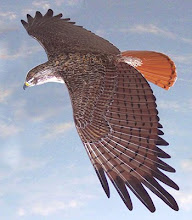The Heart Of The Desert
Ray Charles: Ol' Man River
That Lucky Old Sun


We took a few steps, and the whole magnificence broke upon us.
No one could be prepared for it.
The scene is one to strike dumb with awe, or to unstring the nerves; one might stand in silent astonishment, another would burst into tears.
There are some experiences that cannot be repeated--one's first view of Rome, one's first view of Jerusalem. But these emotions are produced by association, by the sudden standing face to face with the scenes most wrought into our whole life and education by tradition and religion. This was without association, as it was without parallel. It was a shock so novel that the mind, dazed, quite failed to comprehend it. All that we could grasp was a vast confusion of amphitheatres and strange architechtural forms resplendent with color. The vastness of the view amazed us quite as much as its transcendental beauty.
We had expected a canyon--two lines of perpendicular walls 6000 feet high, with the ribbon of a river at the bottom; but the reader may dismiss all his notions of a canyon, indeed of any sort of mountain or gorge scenery with which he is familiar. We had come into a new world. What we saw was not a canyon, or a chasm, or a gorge, but a vast area which is a break in the plateau. From where we stood it was twelve miles across to the opposite walls--a level line of mesas on the Utah side. We looked up and down for twenty to thirty miles. This great space is filled with gigantic architechtural constructions, with amphitheatres, gorges, precipices, walls of masonry, fortresses terraced up to the level of the eye, temples mountain size, all brilliant with horizontal lines of color--streaks of solid hues a few feet in width, streaks a thousand feet in width--yellows, mingled white and gray, orange, dull red, brown, blue, carmine, green, all blending in the sunlight into one transcendent suffusion of splendor. Afar off we saw the river in two places, a mere thread, as motionless and smooth as a strip of mirror, only we knew it was a turbid, boiling torrent, 6000 feet below us. Directly opposite the overhanging ledge on which we stood was a mountain, the sloping base of which was ashy gray and bluish; it rose in a series of terraces to a thousand-feet wall of dark red sandstone, receding upward, with ranges of columns and many fantastic sculptures, to a final row of gigantic opera-glasses 6000 feet above the river. The great San Francisco Mountain, with its snowy crater, which we had passed on the way, might have been set down in the place of this one, and it would have been only one in a multitude of such forms that met the eye whichever way we looked. Indeed, all the vast mountains in this region might be hidden in this canyon.
Wandering a little way from the group and out of sight, and turning suddenly to the scene from another point of view, I experienced for a moment an indescribable terror of nature, a confusion of mind, a fear to be alone in such a presence. With all this grotesqueness and majesty of form and radiance of color, creation seemed in a whirl. With our education in scenery of a totally different kind, I suppose it would need long acquaintance with this to familiarize one with it to the extent of perfect mental comprehension.
The vast abyss has an atmosphere of its own, one always changing and producing new effects, an atmosphere and shadows and tones of its own--golden, rosy, gray, brilliant, and sombre, and playing a thousand tricks to the vision.
I was continually likening this to a vast city rather than a landscape, but it was a city of no man's creation nor of any man's conception. In the visions which inspired or crazy painters have had of New Jerusalem, of Babylon the Great, of a heaven in the atmosphere, with endless perspective of towers and steps that hang in the twilight sky, the imagination has tried to reach this reality. But here are effects beyond the artist, forms the architect has not hinted at. The explorers have tried by the use of Oriental nomenclature to bring it within our comprehension, the East being the land of the imagination. There is the Hindoo Amphitheatre, Shiva's Temple, Vishnu's Temple, Vulcan's Throne. And here, indeed, is the idea of the pagoda architechture, of the terrace architechture, of the bizarre constructions which rise with projecting buttresses, rows of pillars, recesses, battlements, esplanades, and low walls, hanging gardens, and truncated pinnacles. It is a city, but a city of the imagination. In many pages I could tell what I saw in one day's lounging for a mile or so along the edge of the precipice. The view changed with every step, and was never half an hour the same in one place. Nor did it need much fancy to create illusions or pictures of unearthly beauty. There was a castle, terraced up with columns plain enough, and below it a parade-ground; at any moment the knights in armor and with banners might emerge from the red gates and deploy there, while the ladies looked down from the balconies. But there were many castles and fortresses and barracks and noble mansions.
--Charles Dudley Warner
The Heart of the Desert 1891





<< Home